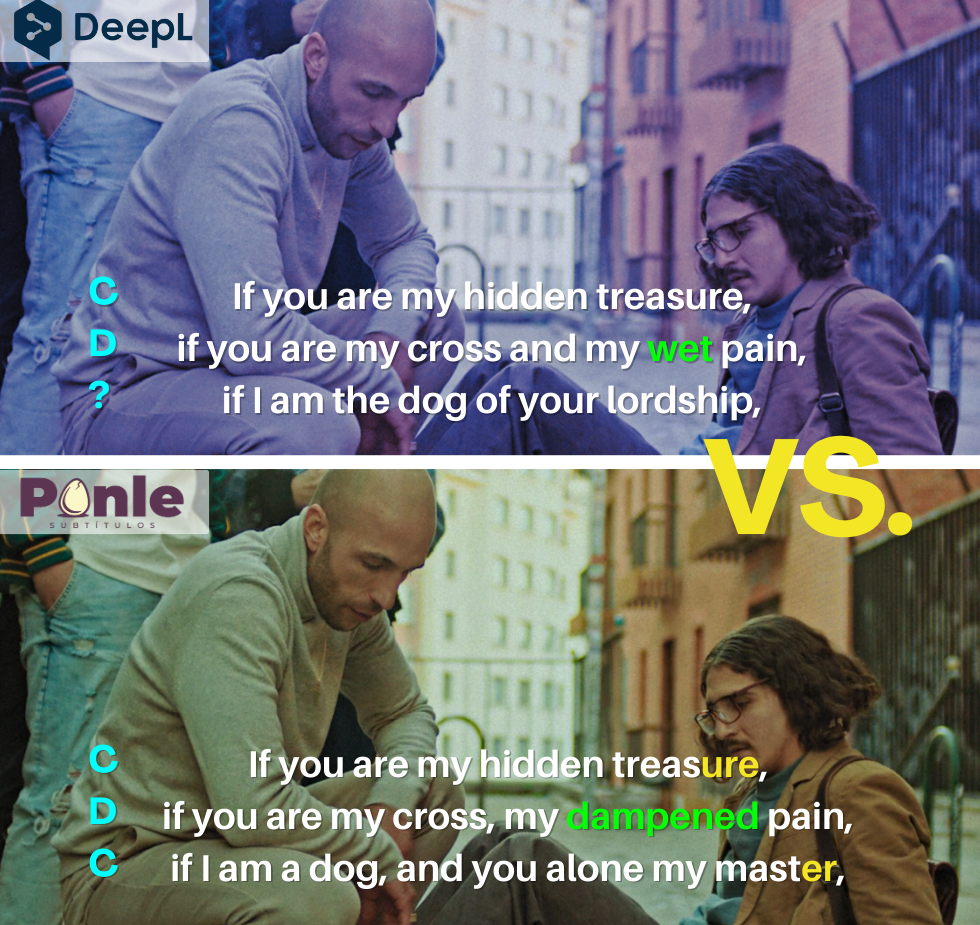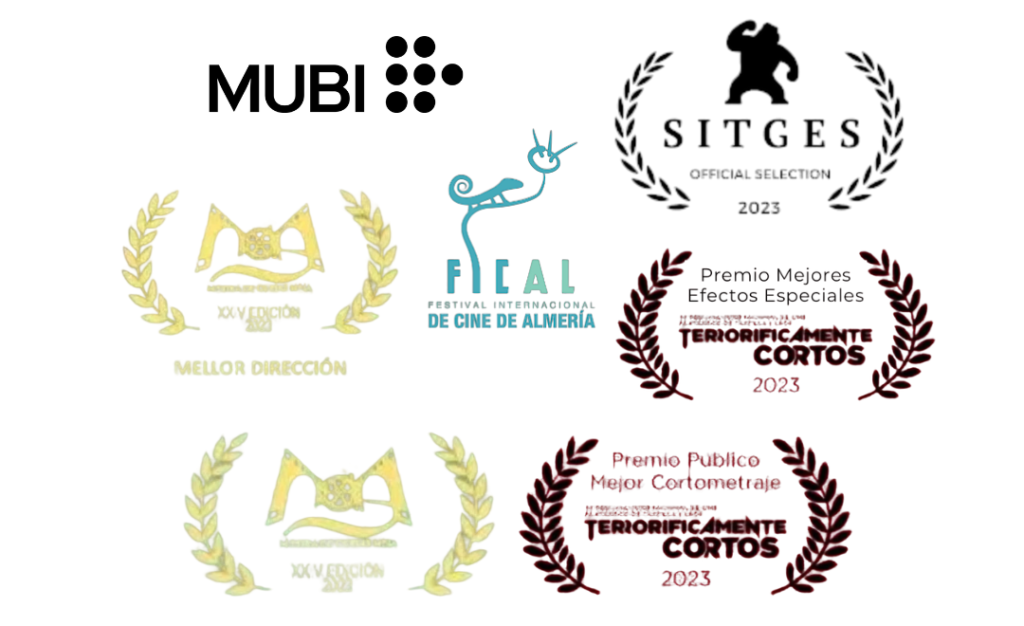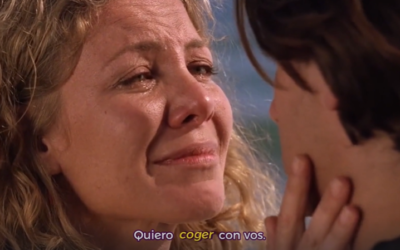Subtitling a poem recited in a film within the field of audiovisual translation is a delicate process that requires a deep understanding of the poem, a correct segmentation of subtitles that ensures they flow naturally with recitation and, above all, creativity that captures the poetic essence and maintains the original tone, style, and metre.
We were very clear about these requirements when Raúl Monge entrusted us to subtitle his short film La ley del más fuerte from Spanish to English.


In the short film there is this climactic scene in which one of the characters recites a poem to the protagonist. The poem is Sonnet of the Sweet Complaint by Federico García Lorca:
Never let me lose the marvel
of your statue-like eyes, or the accent
the solitary rose of your breath
places on my cheek at night.I am afraid of being, on this shore,
a branchless trunk, and what I most regret
is having no flower, pulp, or clay
for the worm of my despair.If you are my hidden treasure,
if you are my cross, my dampened pain,
if I am a dog, and you alone my master,never let me lose what I have gained,
and adorn the branches of your river
with leaves of my estranged Autumn.
What Would Have Happened if Raúl Had Subtitled His Short Film with AI?
To find it out, we have used DeepL, one of the best-rated and most recommended AI-based automatic translation services on the Internet.
Original version of the poem in Spanish:

We have restructured the lines to condense them into a single frame: a good subtitle segmentation should have a maximum of two lines and must be synchronised with the cadence with which the poem is recited.
English version by DeepL vs. Ponle Subtítulos:

As we suspected, AI translates the poem word-for-word. DeepL fails to take into account the musicality, rhythm, or structure of Lorca’s poetry. The first thing you’ll notice is the choice of words. While “wet” and “dampened” share the meaning of “moist”, the latter term is way more lyrical and common in the field of poetry than the former.
And if you look at the structure, the poem has an ABAB, ABAB, CDC, DCD rhyme scheme. The AI completely ignores this structure. Given that the original stanza rhymes “mío” with “señorío”, the English adaptation should look for a translation of “señorío” that rhymes with “treasure”, but DeepL simply uses “lordship”.
Clearly, an alternative like “master” would be way more accurate andthe correct literary equivalent.
Path of La ley del más fuerte with Professional English Subtitles

When Raúl contacted us this summer to subtitle his short film, we received the order with great excitement because we had already worked on another of his projects and meeting this new “transchallenge” quickly triggered our creativity. As you can see, the short film not only made it to the Sitges Film Festival in time, but also managed to premiere in the Special Screening section of the festival.
In the face of such joy, we couldn’t help but imagine what would have happened if a climactic moment in the film, such as the recitation of Lorca’s sonnet, would had been left to the fate of an automatic translator. After making the comparison, we have reached a very clear conclusion: the translation of literary texts is not just about solving problems of meaning. What differentiates professional human translation from AI translation and, above all, good from bad literary translation, is the correct translation of all kinds of euphonies: alliteration, rhyme, and rhythm.
If you find yourself immersed in a complex audiovisual project and need the help of our team of expert native translators in the target language, do not hesitate to contact us.
We will gladly provide you with a quote tailored to your needs.



